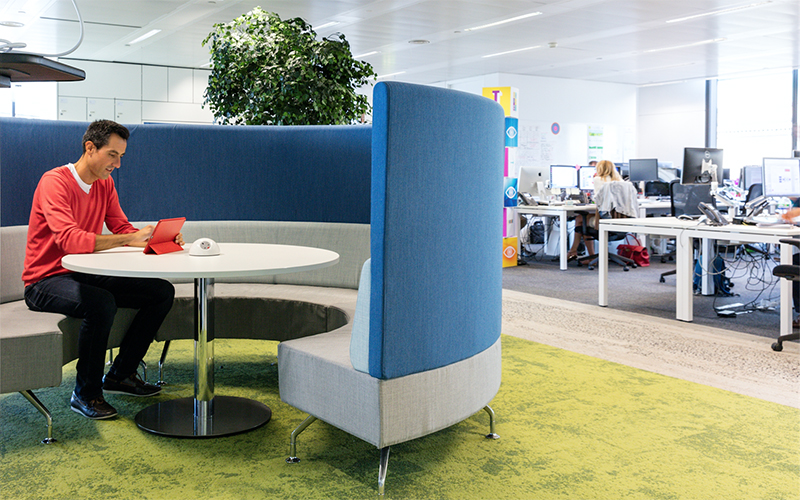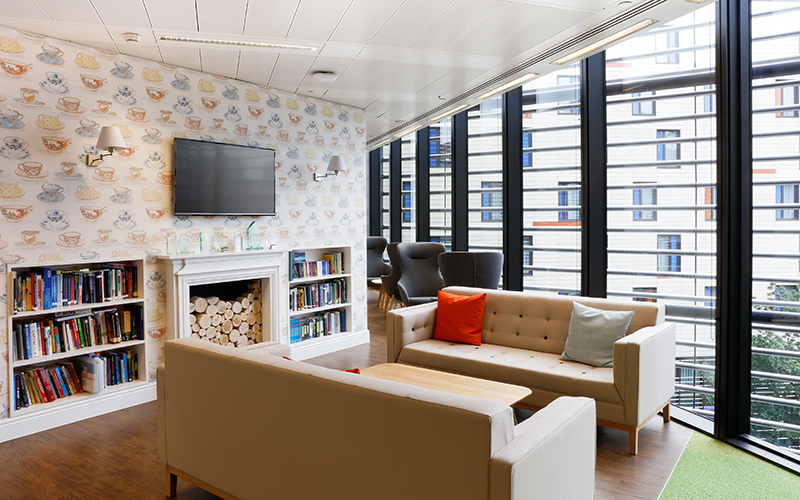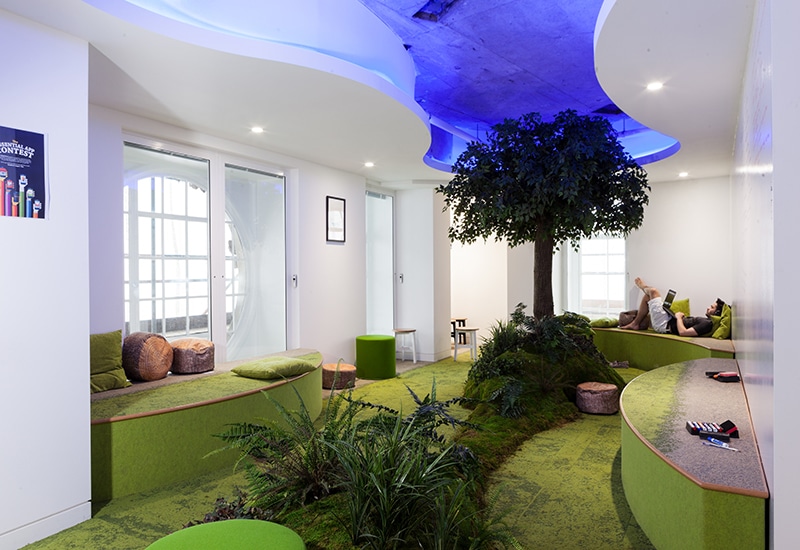The era of nomadic working is shifting. Recent studies, including Peldon Rose’s Summer 2016 Happy Office survey, have found that working remotely can leave employees feeling increasing disconnected from colleagues and community. 66% of people found that their productivity decreased outside the connectivity of the workplace.
With the return of an office-based culture; how can businesses evolve to ensure they provide environments that will both attract the greatest talent and maintain a happy and productive workforce?
Focusing on the worker
Preserving staff wellbeing is fundamental. Investing in a positive office environment demonstrates a commitment to both current employees and new talent. Businesses need to invest in their staff’s wellbeing in order to build a great team and enhance their desire to stay and excel in the company – rather than simply gaining enough experience before moving on.

TNS UK
Let’s start with where many businesses go wrong. Key factors in poor design include trying to squeeze too many people into a small space, or not having any context to the design. The workplace design must be attuned to the needs of the workforce and have relevance to the organisation or the people. It is important to provide staff with a balance of quiet spaces so they can concentrate and open areas so groups can collaborate.
Over 80% of the UK’s office workforce is based in urban environments, and our everyday working lives are growing increasingly isolated from our natural roots. Urban working spaces can be oppressive. They’re often surrounded by high rise buildings, have little natural air, no outside views and only artificial lighting. We don’t, by nature, like to feel trapped and enclosed.
We know the design and framework of a workplace has a huge effect on employee morale, wellbeing and productivity. In fact, 33% of workers say that office design may impact their decision as to whether or not to accept a job offer at all. Poor design can affect employee morale but it can also stop you from being successful in the search for new talent. To ensure you retain your best talent, make the office a destination where staff can be happy and comfortable. The workplace should be somewhere people look forward to spending time.

TNS UK
We need to create spaces that are engaging and they need to be people-centric.
Biophilic design in the workplace
Human beings have an elemental connection to nature and natural processes. This notion, known as biophilia, can reap many physical and psychological rewards – especially when harnessed in the workplace.
The incorporation of nature-inspired materials and elements can help create more positive working environments that stimulate the senses – increasing focus and productivity, sparking creativity and reducing stress. Restoring this connection with nature benefits both businesses and employees.
Peldon Rose believes in taking inspiration from natural surroundings to create more positive, engaging and enjoyable spaces to work. They aim to understand how employees use a space, and then explore how biophilic design elements could help them to draw energy and ideas, or simply concentrate and recuperate.
Examples from Peldon Rose’s work
For example, the firm used biophilic elements to create inspiring workspaces that make positive impacts on employee engagement and enthusiasm at the JustGiving head office in Southwark. The Eating Meeting Hub was one of the many spaces in the office in which we used biophilic design to create a space conducive to collaboration and agile working.

Essence
Another project where Peldon Rose utilised the potential of biophilia was in the London HQ of digital agency, Essence. Using Interface’s biophilic-inspired Urban Retreat collection, Peldon Rose created a space that was calming and stimulating – taking inspiration from outdoor spaces around the office.
There is a real connection to mental wellbeing and that feeling of space and freedom that’s associated with bringing the nature into the office. Biophilic design means harnessing the power of nature. It is key to attracting and keeping the very best talent.
One response to “Attracting New Talent and Maintaining a Happy Workforce”
Well mamcaadia nuts, how about that.